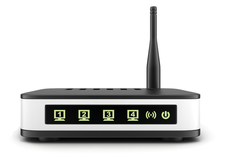Exploring the SafeSquid filter proxy
Safety Filter

If you are looking for a secure option for home surfing and want to protect your children against questionable web content, you need a filtering proxy. SafeSquid is a commercial proxy tool, but it comes with a free version for private users.
SafeSquid acts as a proxy for home users and small to medium-sized networks. The software sits between the browser and the Internet and provides a number of content filters (including for Flash) to make surfing more secure by defining domain blacklists and scanning for malware. Additionally, SafeSquid provides access control in the form of website categories and profiles, as well as an image recognition feature for blocking pornographic material.
Thanks to a cache for web pages and images, in combination with intelligent prefetching for web pages, the SafeSquid also accelerates the surfing experience. A convenient web interface lets users evaluate logs and generate reports. Although the name might make you think otherwise, SafeSquid does not actually use the open source Squid proxy under the hood; instead, it uses a C/C++ in-house alternative developed by the vendor Office Efficiencies. SafeSquid also relies on Bash and Perl scripts for various application cases.
The vendor provides a free version and several commercial alternatives. The free Composite edition is likely more interesting for home users. One difference between the free and commercial variants is that the free version is limited to a maximum of three users. If more than three users access the network filter suite that is centrally installed on your home network, you need the commercial version [1].
[...]
Buy this article as PDF
(incl. VAT)
Buy Linux Magazine
Subscribe to our Linux Newsletters
Find Linux and Open Source Jobs
Subscribe to our ADMIN Newsletters
Support Our Work
Linux Magazine content is made possible with support from readers like you. Please consider contributing when you’ve found an article to be beneficial.

News
-
Linux Mint 22.2 Beta Available for Testing
Some interesting new additions and improvements are coming to Linux Mint. Check out the Linux Mint 22.2 Beta to give it a test run.
-
Debian 13.0 Officially Released
After two years of development, the latest iteration of Debian is now available with plenty of under-the-hood improvements.
-
Upcoming Changes for MXLinux
MXLinux 25 has plenty in store to please all types of users.
-
A New Linux AI Assistant in Town
Newelle, a Linux AI assistant, works with different LLMs and includes document parsing and profiles.
-
Linux Kernel 6.16 Released with Minor Fixes
The latest Linux kernel doesn't really include any big-ticket features, just a lot of lines of code.
-
EU Sovereign Tech Fund Gains Traction
OpenForum Europe recently released a report regarding a sovereign tech fund with backing from several significant entities.
-
FreeBSD Promises a Full Desktop Installer
FreeBSD has lacked an option to include a full desktop environment during installation.
-
Linux Hits an Important Milestone
If you pay attention to the news in the Linux-sphere, you've probably heard that the open source operating system recently crashed through a ceiling no one thought possible.
-
Plasma Bigscreen Returns
A developer discovered that the Plasma Bigscreen feature had been sitting untouched, so he decided to do something about it.
-
CachyOS Now Lets Users Choose Their Shell
Imagine getting the opportunity to select which shell you want during the installation of your favorite Linux distribution. That's now a thing.

